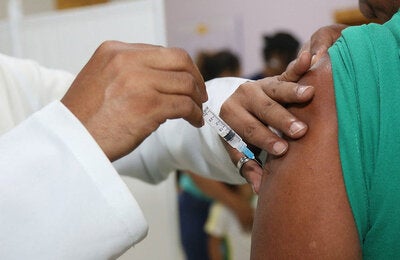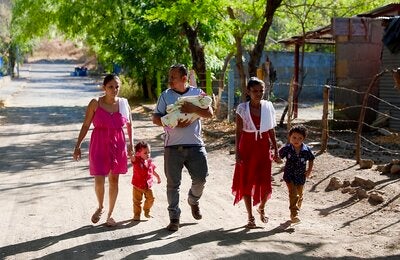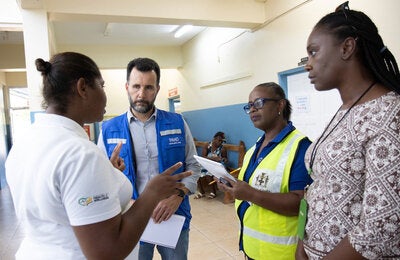

The Pan American Health Organization/World Health Organization (PAHO/WHO) has updated its preliminary characterization of Zika Congenital Syndrome, after an international meeting in Pernambuco.
Washington, 22 July 2016 (PAHO/WHO) — The Pan American Health Organization/World Health Organization (PAHO/WHO) has updated its preliminary characterization of Zika Congenital Syndrome, after an international meeting in Pernambuco.
The event gathered scientists from Brazil, Colombia, Argentina, the United States, PAHO and WHO to investigate the details of Zika virus infection and its effects on the child. The update aims to contribute to improvement of the care provided in health services in the affected regions.
PAHO/WHO is leading a process to gather and review more evidence to clearly define these effects and will update its description as further evidence is produced.
In addition to previously known signs, such as microcephaly and some brain abnormalities described earlier, other aspects characterizing the Zika Congenital Syndrome have been identified.
They include clinical conditions and neuroimaging findings mainly related to the central nervous system such as epilepsy, hearing and visual impairment, and psychomotor development as well as effects on the bones and joints, or the osteoarticular system. These conditions have been characterized and analyzed in terms of frequency and severity in the time periods including antenatal, neonatal (0 to 28 days) and the child's first year.
The scientists looked at systematic reviews of data on Zika, and shared country experiences from Brazil and Colombia. They heard an overview of the epidemiological situation, presented by PAHO's Incident Manager for Zika, Dr. Sylvain Aldighieri, and visited health care facilities in Recife that care for infants who have microcephaly and other conditions associated with Zika virus infection.
The experts noted, "The range of abnormalities seen and the likely causal relationship with Zika virus infection suggest the presence of a new congenital syndrome. WHO has set in place a process for defining the spectrum of this syndrome. The process focuses on mapping and analyzing the clinical manifestations encompassing the neurological, hearing, visual and other abnormalities, and neuroimaging findings."
Information on the complications resulting from Zika virus infection is still limited, and the scientists shared data on diagnosis, description, consequences, physical processes and analysis of evidence from clinicians and researchers on their main findings so far.
"Our aim is to assist the countries in strengthening surveillance of Zika and Zika Congenital Syndrome, in addition to enhancing readiness for dealing with Guillain-Barré cases in health services. The spatial and temporal association of Zika and Guillain-Barré syndrome is evident in various countries," noted PAHO/WHO's Aldighieri.
"We had the opportunity to go to IMIP (Instituto de Medicina Integral Professor Fernando Figueira), in Pernambuco, and see the excellent, incredible, work that they are doing in following up and taking care of about 200 children with microcephaly. It's important that we get this kind of work to other parts of Brazil and the world for children affected with microcephaly," said PAHO/WHO's Director of Family, Gender and Life Course, Dr. Andres de Francisco. "We also should remember that Zika is not the only cause of microcephaly and microcephaly is not the only possible sign of Zika," he added.
Dr. Luis Codina, PAHO/WHO's deputy representative in Brazil, said, "After almost a year of very strong work done by various groups of researchers, today there is a certain consensus in associating Zika not only with microcephaly, but also with other aspects of a congenital syndrome. PAHO wants to facilitate this process of investigation and generation of knowledge."
Media Contacts
In Washington, DC:
Daniel Epstein, PAHO/WHO, epsteind@paho.org, tel.: +(1)202- 974-3579
Leticia Linn, PAHO/WHO, linnl@paho.org, tel.: +(1) 202-974-3440
In Brazil:
Luís Felipe Sardenberg, Tel.: +55 61 3251-9581, cunhaslui@paho.org
Links
— WHO Bulletin: Defining the syndrome associated with congenital Zika virus infection
— PAHO Zika Virus Infection



